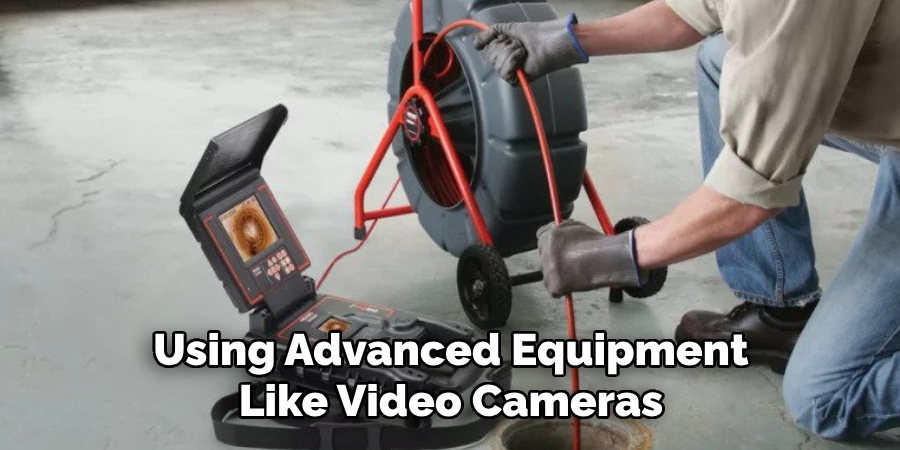Maintaining a sewer line is an essential aspect of homeownership that can prevent costly repairs and ensure a properly functioning plumbing system. Over time, sewer lines can become clogged or damaged due to various factors such as tree root intrusion, buildup of grease, or the deterioration of older pipes.

Regular maintenance not only prolongs the life of your sewer system but also helps avoid unpleasant sewer backups and environmental hazards. In this guide on how to maintain sewer line, we will discuss practical steps and best practices you can implement to keep your sewer line in optimal condition.
Why Maintain Your Sewer Line?
Sewer line maintenance is crucial for the proper functioning of your home’s plumbing system. A clogged or damaged sewer line can lead to various problems such as slow drains, foul odors, and sewage backups. These issues not only cause inconvenience but also pose health hazards and require expensive repairs.
Additionally, regular maintenance can help you identify potential problems before they turn into larger issues that are more difficult and costly to fix. Taking preventive measures can save you time, money, and stress in the long run.
Needed Materials
Before starting any maintenance work on your sewer line, it is essential to have the necessary materials and tools. Here are some items you may need:
Plumbing Snake or Auger:
This tool is used to clear clogs in your sewer line. It consists of a long, flexible cable with a curved end that can reach deep into the pipes and break up blockages.
High-Pressure Water Jet:
A high-pressure water jet is another effective tool for removing stubborn clogs and buildup in your sewer line. It uses pressurized water to blast away debris and clean the inside of the pipes.
Protective Gear:
Sewer lines can contain harmful bacteria and chemicals, so it is crucial to protect yourself while performing maintenance tasks. Consider wearing gloves, goggles, protective clothing, and a mask if needed.

8 Steps on How to Maintain Sewer Line
Step 1: Inspect the Sewer Line
The first step in maintaining your sewer line is to conduct a thorough inspection. Begin by examining visible portions of the sewer line if accessible, looking for signs of leaks, corrosion, or any unusual odors that may indicate issues. Next, consider using a plumbing camera to inspect the interior of the pipes.
This high-tech tool allows you to see blockages, cracks, or other damage that may not be visible from the outside. Regular inspections help you identify potential problems early and take necessary actions before they escalate, ensuring the longevity and efficiency of your sewer system.
Step 2: Clear Out Debris and Tree Roots
Tree roots are a common cause of sewer line problems as they can grow into the pipes, causing blockages and damage. Regularly checking for trees or shrubs near your sewer line is crucial in preventing root intrusion. If you notice any overgrowth, consider clearing out the area to prevent potential issues in the future.
Additionally, use a plumbing snake or high-pressure water jet to clear out any debris or buildup inside the pipes that may impede the flow of sewage. This step will help maintain proper functionality and avoid clogs.
Step 3: Flush Your Sewer Line
Flushing your sewer line with hot water is an easy and effective way to keep it clean. Pouring a large pot of boiling water down the drain can help dissolve grease, soap scum, and other buildup that may accumulate over time.
You can also add a cup of baking soda followed by a cup of vinegar and let it sit for half an hour before flushing with hot water. This natural solution will help break down stubborn clogs and eliminate any foul odors.

Step 4: Consider Biodegradable Cleaners
While chemical cleaners may provide temporary relief from clogs, they can be harmful to your sewer line in the long run. They contain harsh chemicals that can damage your pipes and harm the environment.
Instead, consider using biodegradable cleaners that are safe for your sewer line and the environment. These products use natural enzymes to break down organic materials and keep your pipes clean without causing any damage.
Step 5: Dispose of Waste Properly
One of the main causes of clogged sewer lines is flushing inappropriate items down the toilet or pouring grease, oil, and food scraps down the drains. These materials can accumulate in the pipes and cause blockages over time.
To prevent these issues, make sure to dispose of waste properly by throwing it in the trash or composting it instead of flushing it down the toilet. Additionally, pour cooking oils into a container and discard them in the garbage rather than pouring them down the drain.
Step 6: Check for Leaks and Damage
Regularly checking for leaks and damage is vital in maintaining your sewer line. Look for signs of water damage, mold growth, or foul odors in your basement or yard. These could be indications of a leak in your sewer line.
If you suspect a leak, it is best to call a professional plumber to assess the situation and make any necessary repairs. Ignoring leaks can lead to more significant issues that may require costly repairs.

Step 7: Consider Installing a Backwater Valve
A backwater valve is a one-way valve installed on your sewer line to prevent sewage from backing up into your home during heavy rainfall or flooding. It is an effective way to protect your home from sewage backups and reduce the risk of water damage.
Consider consulting a plumbing professional to determine if a backwater valve is necessary for your home and to install it correctly.
Step 8: Schedule Regular Professional Inspections
While you can perform basic maintenance tasks on your sewer line, it is recommended to schedule regular professional inspections. A licensed plumber will have the expertise and equipment needed to thoroughly assess your sewer line and identify any potential issues that may not be visible to the untrained eye.
They can also provide recommendations on how frequently you should maintain your specific type of sewer line based on its age, material, and location.
Following these steps on how to maintain sewer line can help you maintain a healthy and functional sewer line, preventing costly repairs and potential health hazards. Remember to always prioritize safety precautions and consult a professional if you encounter any major issues with your sewer line. A well-maintained sewer line is crucial for the overall health and functionality of your home’s plumbing system. So, make sure to include it in your regular home maintenance routine.
Do You Need to Use Professionals?
While many homeowners can perform basic maintenance tasks on their sewer lines, there are circumstances where it is beneficial to engage a professional plumber. Professionals possess the necessary training, experience, and tools to handle more complex issues such as severe blockages, tree root intrusions, or significant leaks that may not be easily addressed with DIY methods. They can also carry out extensive inspections using advanced equipment like video cameras, providing a thorough assessment of the sewer line’s condition.
Additionally, local plumbing codes may require certain repairs or installations, like a backwater valve, to be completed by certified professionals to ensure compliance and safety. When in doubt or when faced with unfamiliar problems, it is always wise to consult a professional to avoid exacerbating the issue and incurring higher costs in the long run. Prioritizing the health of your sewer line with professional oversight can ultimately save you time, money, and unnecessary stress.

Frequently Asked Questions
Q: How Often Should I Maintain My Sewer Line?
A: The frequency of maintenance will depend on various factors such as the age, material, and location of your sewer line. It is generally recommended to schedule professional inspections every 1-2 years and perform basic maintenance tasks every few months to keep it in good condition. However, if you encounter any signs of issues like slow drains, foul odors, or water damage in your basement or yard, it is best to address them immediately.
Q: Can I Use Chemical Cleaners on My Sewer Line?
A: We do not recommend using chemical cleaners as they can be harmful to your pipes and the environment. Instead, opt for biodegradable cleaners or natural solutions such as hot water, baking soda and vinegar to clean your sewer line.
Q: How Do I Know If My Sewer Line Is Clogged?
A: Some common signs of a clogged sewer line include slow-draining sinks and toilets, gurgling noises in your drains, and foul odors in your home. You may also notice sewage backups or water damage in your basement or yard.
Conclusion
Maintaining your sewer line is an essential aspect of homeownership that can save you from significant inconveniences and costly repairs down the line. By following the steps outlined in this guide on how to maintain sewer line—ranging from regular inspections to proper waste disposal—you can ensure the longevity and efficiency of your sewer system.
It’s important to stay proactive and recognize potential issues before they escalate, ultimately protecting your home and health.
Remember, when in doubt or faced with major concerns, always seek the assistance of a qualified plumbing professional to address any problems effectively. A well-cared-for sewer line contributes to the overall functionality of your plumbing system and enhances your home’s safety and comfort.

